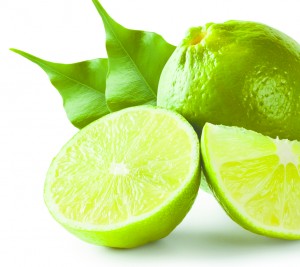By Ronna L. Clements, Natural Health & Wellness Innovator
 Limes are native to southeastern Asia and they have been cultivated for thousands of years.
Limes are native to southeastern Asia and they have been cultivated for thousands of years.
Historians started mentioning limes around the time of the Crusades, and in 1626, Sir Thomas Herbert spoke of finding oranges, lemons, and limes on the island of Mohelia, off Mozambique.
Lime trees grew on the island of Haiti as early as 1514 and the cultivated lime spread from the West Indies to Florida. Wild lime groves found in the Florida Keys were planted by a gentleman named Henry Perrine in 1838. Congress granted him land for growth of economical plants.
Today, Florida grows most of the limes in this country. California is second in production and Mexico is a close third.
The therapeutic value of limes is very high as they are one of the most alkalinizing foods. They are extremely good for arthritis because of their high Vitamin C content.
A drink mixed of lime juice with coconut water is a wonderful cooler for the brain and nervous system. Limes are good for a brain with a great deal of “hot blood” in it, which usually shows itself in anger, hatred, or other brain disturbances.
Like lemons, limes are very high in Vitamin C, are a good source of Vitamin B1, and are rich in potassium.
Limes make a delicious dressing for fish, and when added to melons, bring out the natural flavor of
the melon.
Sub-acid fruits, such as apples, pears, plums, peaches, grapes, and apricots tend to digest well with this citrus fruit.
Limes spoil easily and if they have a dry and leathery skin, they should be avoided. They are best stored in a cool, dry place.
So, when you want to add a spring to your step and a little bit of zest to your
life, put some lime juice on your food or in your coconut water.
The vibrant taste is refreshing any time of the day.
Enjoy!
ronnaclements@aol.com
www.theprogrambyronna.com
(561) 632-9187
Check Also
WHAT IS MY CIRCADIAN RHYTHM AND WHY DOES IT MAKE ME FEEL SO “OFF”
By Renee Chillcott, LMHC Have you heard terms such as “biological clock” or “biorhythms”, or …
 South Florida Health and Wellness Magazine Health and Wellness Articles
South Florida Health and Wellness Magazine Health and Wellness Articles




